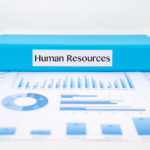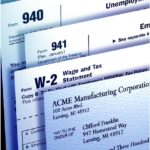Inspirational journeys
Follow the stories of academics and their research expeditions
End-of-Year HR Checklist: Wrapping Up the Year with Confidence

As the year ends,
HR professionals and business owners face a crucial task: ensuring their
end-of-year responsibilities are completed efficiently and accurately. From
compliance obligations to preparing for a fresh start in the new year, this
checklist will guide you through the essential steps to close the year with
confidence and set the stage for success in the months ahead.
1. Review
Employee Records for Accuracy
- Ensure employee information, such
as addresses, Social Security numbers, and job classifications, is up to
date.
- Verify that all changes made
during the year (e.g., promotions, terminations, benefits updates) are
properly documented.
- Use this opportunity to clean up
your HR software or physical records, removing duplicated or outdated
files.
2. Conduct
Year-End Performance Reviews
- Schedule one-on-one meetings with
employees to review their accomplishments, challenges, and goals for the
year.
- Use the reviews to gather
insights for professional development plans and identify high performers
for recognition or promotions.
- Tie performance evaluations to
year-end bonuses or raises to boost morale and retention.
3. Prepare
for Year-End Payroll and Tax Reporting
- Double-check all payroll data to
ensure it aligns with year-to-date earnings, deductions, and taxes.
- Confirm deadlines for issuing W-2s
(employees) and 1099s (contractors). These forms must be sent by
January 31.
- Verify compliance with ACA
(Affordable Care Act) reporting requirements for applicable large
employers.
- Conduct a reconciliation of
payroll taxes to ensure no discrepancies with IRS filings.
4. Verify
PTO Balances and Carryover Policies
- Audit employees' unused vacation
or sick time balances.
- Communicate carryover or
"use-it-or-lose-it" policies clearly to employees.
- Consider offering payout options
for unused PTO if allowed by your state and company policy.
5. Review
and Update Employee Benefits
- Finalize open enrollment,
ensuring all benefit selections are accurately recorded.
- Review vendor contracts for
health insurance, retirement plans, or other benefits to ensure they meet
your needs and budget for the coming year.
- Share updated benefits summaries
with employees to avoid confusion in the new year.
6.
Compliance Check: Stay Ahead of the Law
- Conduct an audit to ensure your
business complies with all local, state, and federal employment laws.
- Review and update employee
handbooks and policies to reflect changes in legislation.
- Prepare for new labor laws or tax
changes that take effect on January 1, 2025.
7.
Celebrate Successes and Recognize Employees
- Host a year-end meeting or
celebration to thank employees for their contributions.
- Share company achievements from
the past year to build a sense of pride and unity.
- Consider giving personalized
thank-you notes, gifts, or awards to recognize outstanding performance.
8. Plan
for a Smooth Transition into the New Year
- Set goals for the HR department
and the company.
- Develop a training plan to
address any skill gaps identified during performance reviews.
- Create a roadmap for onboarding
new hires or implementing new systems in the coming year.
Why This
Checklist Matters
Failing to
close the year properly can lead to compliance risks, financial penalties, and
missed opportunities to improve your workforce's experience. By following this
checklist, you’ll not only meet your legal and operational obligations but also
create a strong foundation for growth and success in the year ahead.
Closing
Thoughts
The end of
the year can be a hectic time, but with a well-organized plan, you can handle
the workload efficiently while keeping your employees engaged and motivated.
Start working on your checklist today and ensure you wrap up the year with
confidence—your business, employees, and future self will thank you!
0 Comments
Categories
Recent posts
End-of-Year HR Checklist: Wrapping Up the Year with Confidence
Mon, 16 Dec 2024





Leave a comment